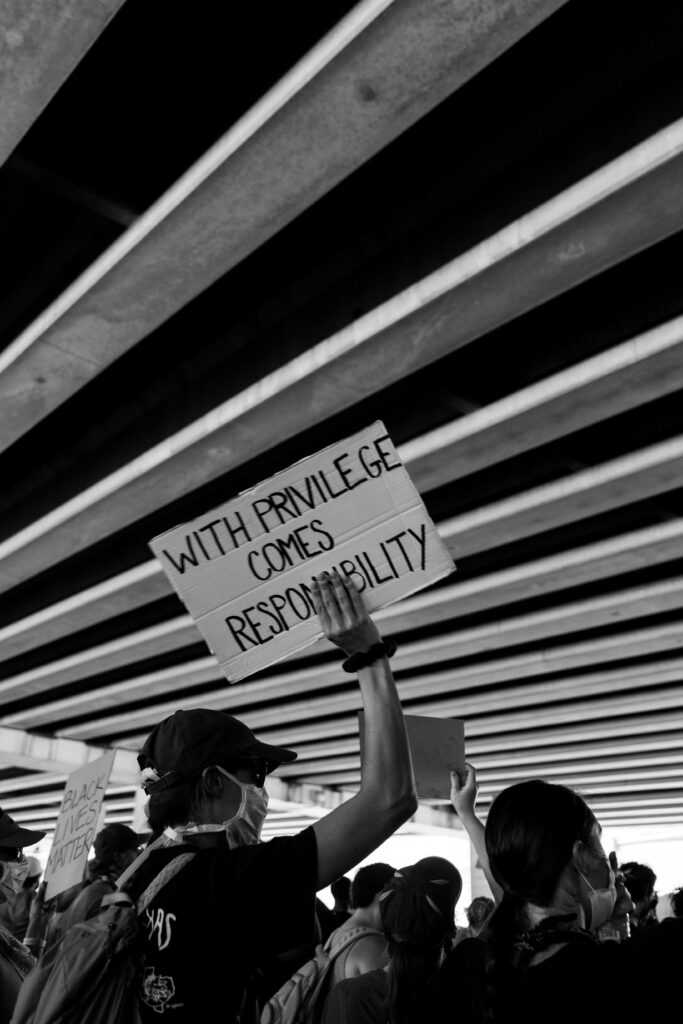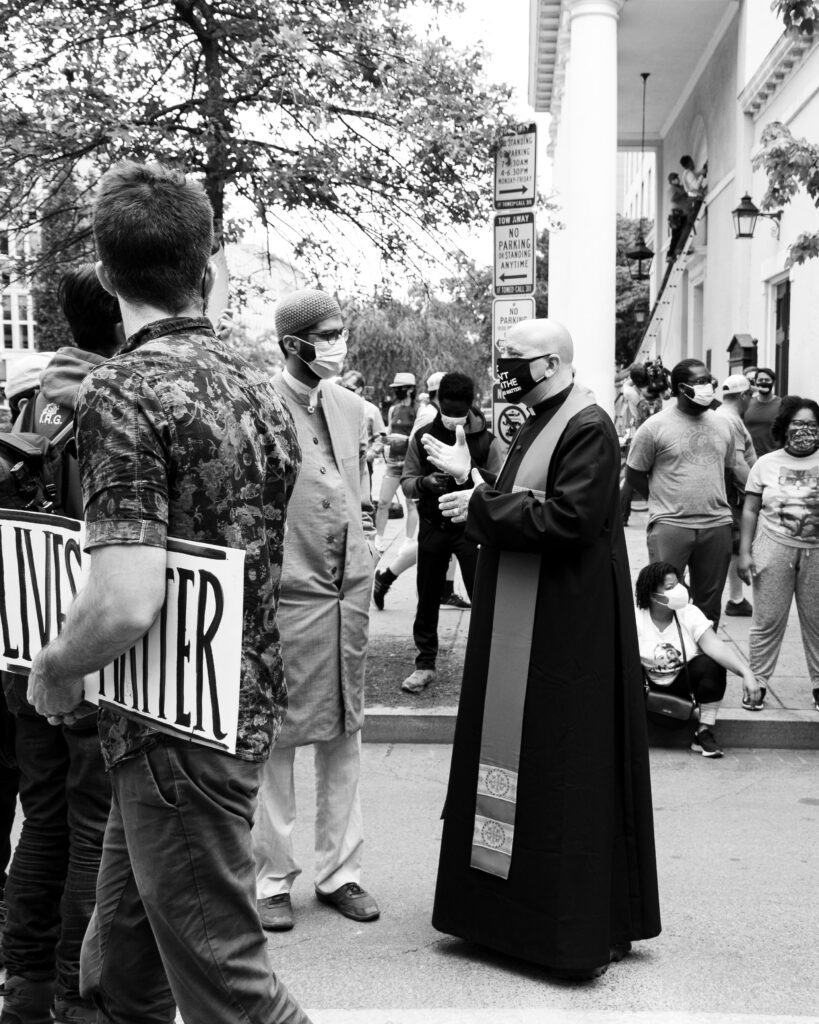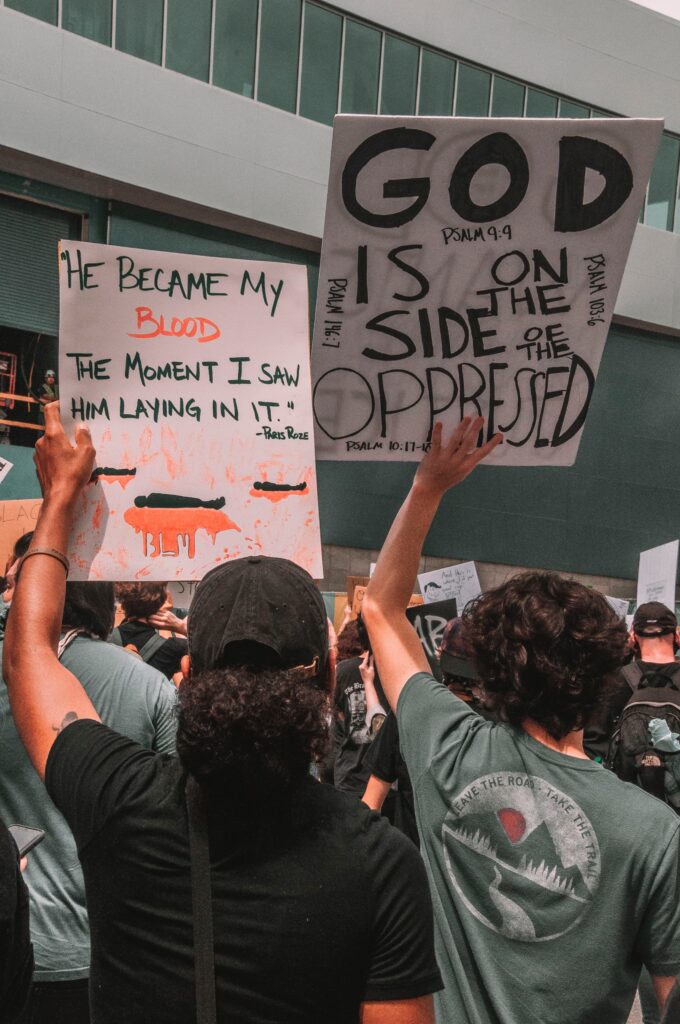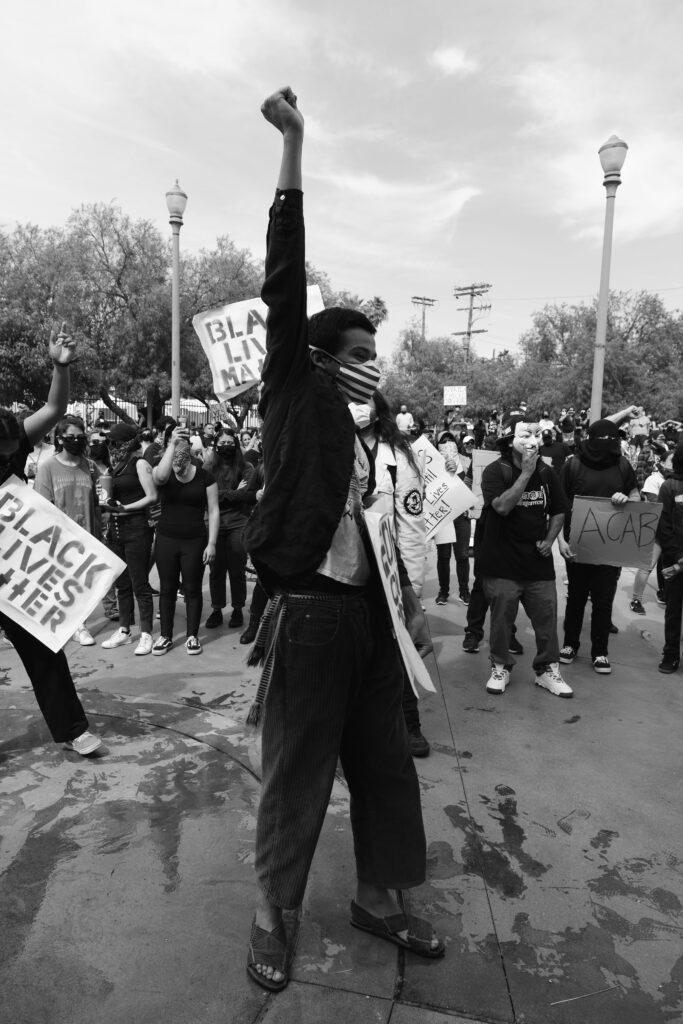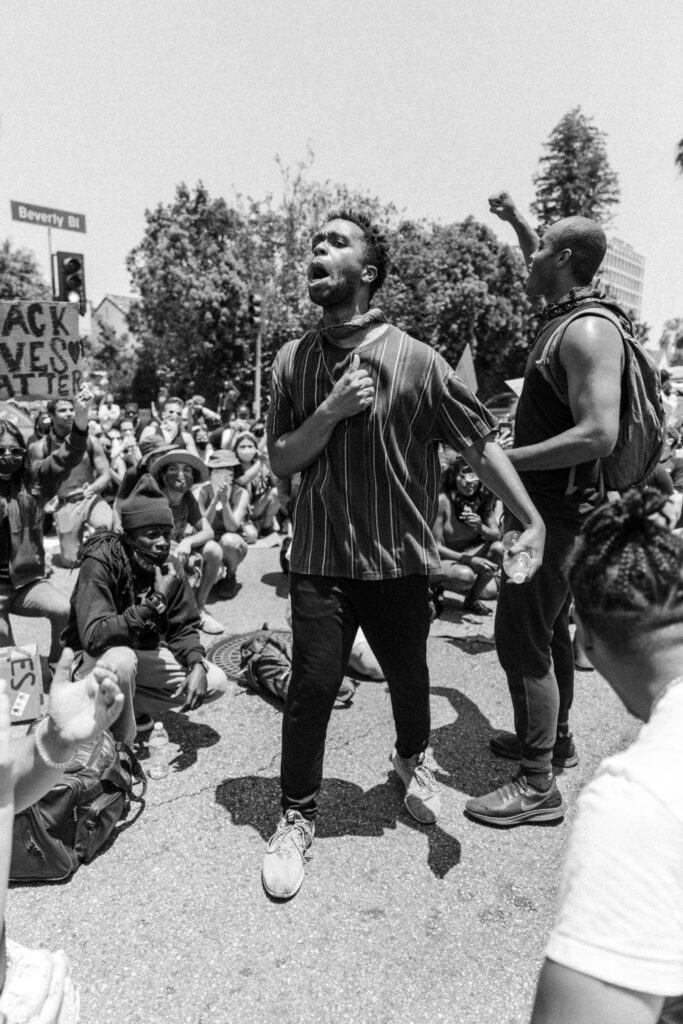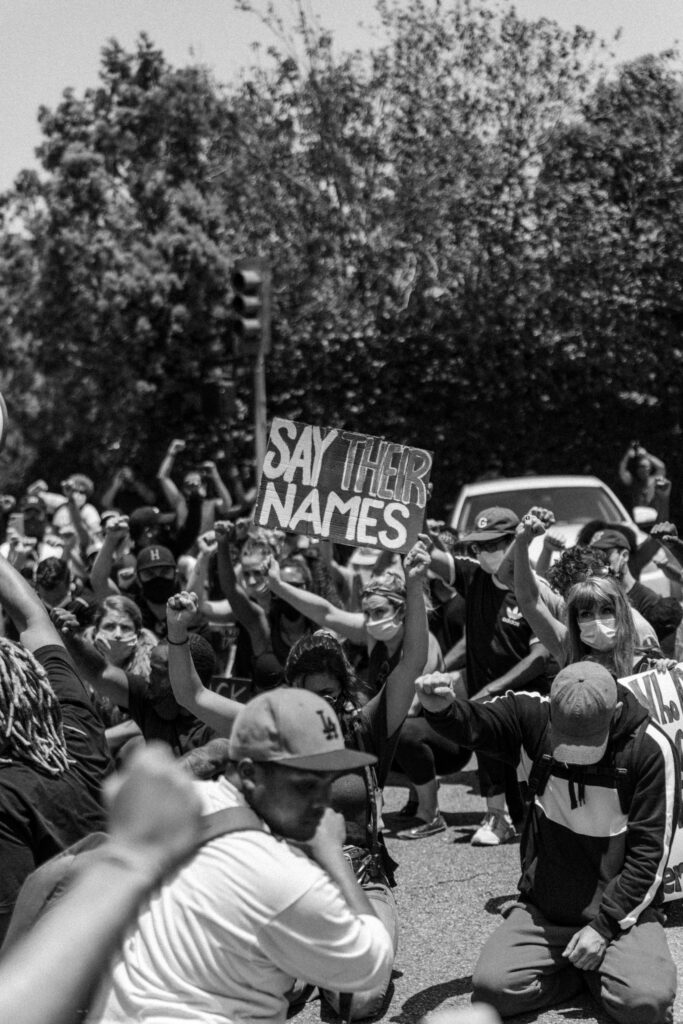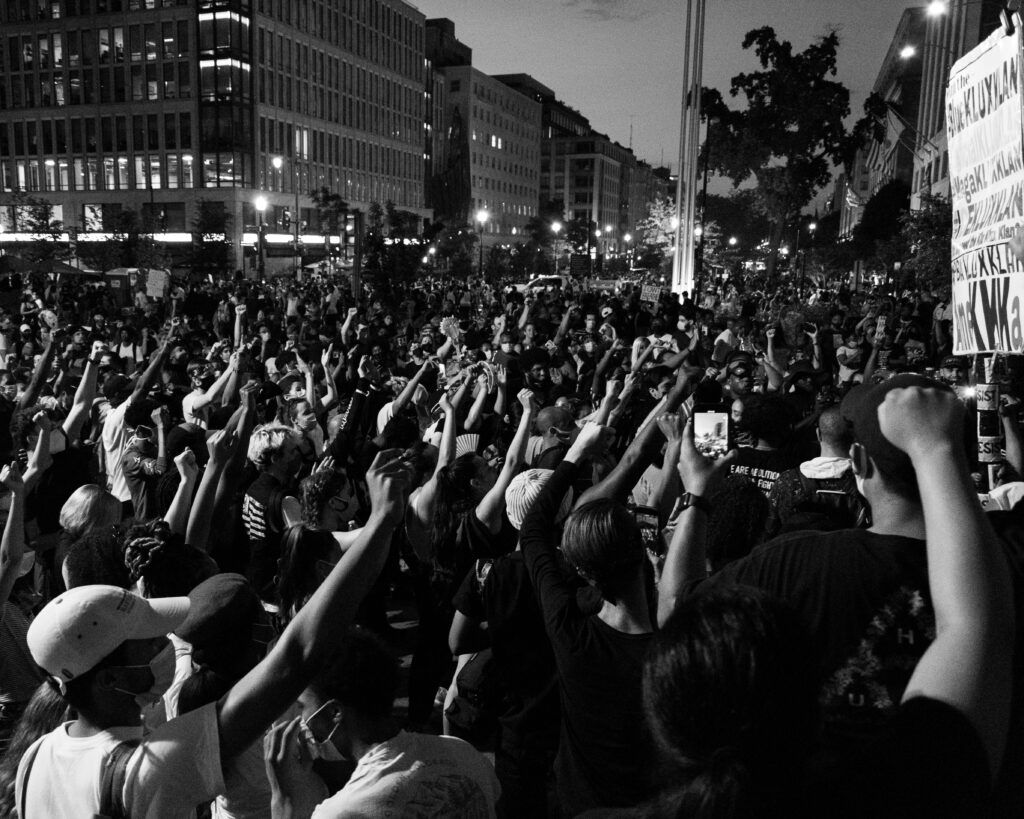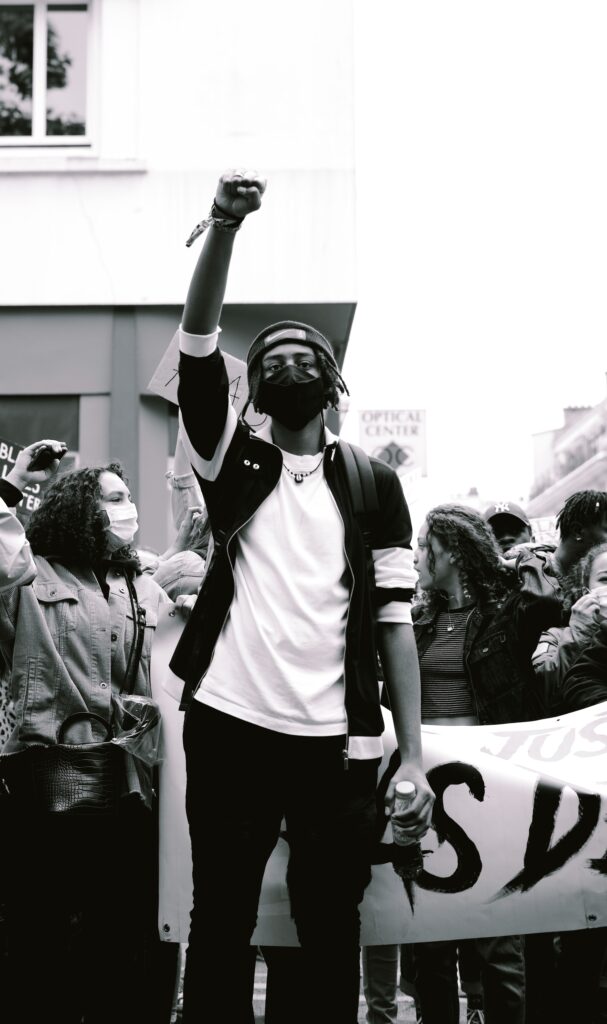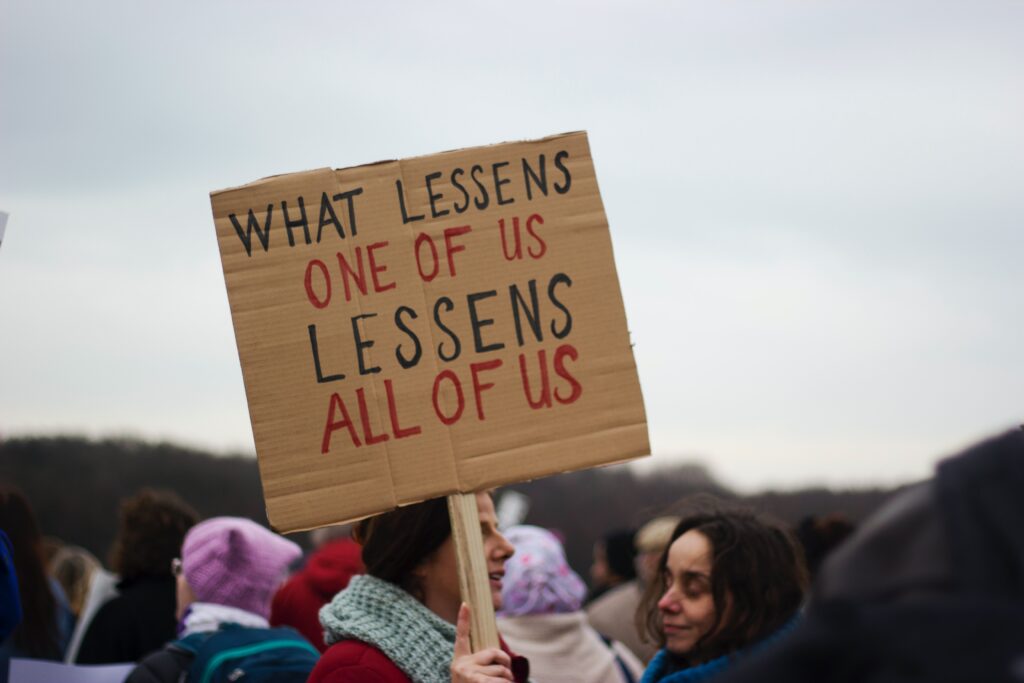First published in ISKCON News on June 21, 2020

For the past several weeks we have been watching a stream of broadcasts revealing the violence against African Americans that has been endemic to American culture for the past four hundred years. The videos are clear evidence of systemic racism, and any thoughtful person, devotee or not, cannot help but feel angry. Yet many ISKCON community members I have spoken with recently are confused about how we should respond. Should we join the protests? Should we speak out against a government that oppresses black men and women and attacks those wishing to publicly object to such racism? Is meddling in politics the business of Vaishnavas? As devotees, are we entitled to get angry?
The Bhagavad Gita has something to say about anger—two “somethings” that seem to contradict one another. One is shockingly violent. In a startlingly passage (2.32) Sri Krishna tells Arjuna that when there is a chance for righteous battle, “happy are the warriors to whom such fighting opportunities come unsought, opening for them the doors of the heavenly planets”—essentially advising Arjuna to prepare to die. Krishna proceeds to say that He Himself takes up the call to fight (4.8) when there is a decline of religious principles and a rise of irreligion. At such time, He comes “to deliver the pious and to annihilate the miscreants.” He follows this (4.42) by making it painfully clear to Arjuna that, however long they may discuss the matter, He expects Arjuna to “stand and fight.” As if to underscore the seriousness of His expectations, He goes so far as to warn Arjuna that if he fails to show the righteous anger needed to enter into battle, he will “incur sin for neglecting [his] duties and thus lose [his] reputation as a fighter.” (2.33)
How can killing be the consequence of the teachings of a religious text? How does violence represent the values of a just Divinity? What kind of Bhagavad Gita or “Call of the Supreme” is it that encourages anger and slaughter?
The answer is the second “something” that the Gita has to say about anger. The miracle of the Gita is not that it records Arjuna’s turn from inaction to battle, from pacifism to anger; that was a foregone conclusion. He was a warrior, the enemy was a regime of homicidal usurpers, and they had to be stopped. Rather, the miracle is that the same text that calls for Arjuna to bring down his enemies calls for him to do so with love.
For Bhakti Yogis anger must eventually give way to love, and the Gita provides the spiritual resources to make this transition possible. In the aggregate, while some isolated verses do take a firm stand against evildoers, the majority of the Gita’s verses emphasize the value of nonviolence, of compassionate behavior, and a vision of all living beings as equal and worthy of respect—including one’s enemies. In just one chapter alone, Krishna says:
“One who is not envious but who is a kind friend to all living entities…is very dear to Me.” (12.13)
“He for whom no one is put into difficulty…is very dear to Me.” (12.15)
Then, as if to draw a heavy line under the contradictory nature of Arjuna’s duty, Krishna concludes His list of those most dear to Him by saying, “One who is equal to friends and enemies…is very dear to Me.” (12.18) It is challenging to imagine what Arjuna was thinking at that moment, hearing from Krishna that he must be equal to friends and enemies—and also kill his enemies.
The ensuing battle was not a false reconciliation. Arjuna was confronting state-sponsored terror, and he was compelled by both duty and faith to act. That is why the Vaishnava community today should be actively speaking out against systemic, institutional racism in America—not only because it is the socially responsible thing to do but also the spiritually necessary thing to do. Without that socially active dimension, Krishna consciousness is at risk of becoming irrelevant to anyone other than those living behind the sequestering walls of a temple.
We might consider not only Arjuna’s epiphany on the verge of the battle of Kurukshetra but also his actions after emerging victorious from the battle: Once installed on the throne that was rightfully theirs, he and his brothers did not punish their enemies further, but instead invited Dhritarastra and his son, Duryodhana, to live with them. The Pandavas then set about restoring order to the kingdom and implementing the social reforms for which they had fought so bravely.
Protest becomes a spiritual enterprise when it moves from vengeance to justice, when it reflects not hatred of our enemies but compassion for their victims.
Tweet
Protest becomes a spiritual enterprise when it moves from vengeance to justice, when it reflects not hatred of our enemies but compassion for their victims, and when we learn to see not enemies but fellow spirit souls, misled perhaps, mistaken in their values or actions, even heinously so, but worthy of respect as sparks of the same Supreme Being from whom we come. That vision of the dignity of all life—not just human but other than human as well—is the “call” from Sri Krishna that we are compelled to answer.
It is a call that should move us—as Vaishnavas and as human beings—to act whenever injustice is visited upon anyone.
Yogesvara dasa was initiated by Srila Prabhupada in 1970. He taught Holocaust history at Hofstra University and frequently lectures before educational and legal venues nationwide.


